#Natural Resource Data Solutions
Explore tagged Tumblr posts
Text
“The History and Sovereignty of the South China Sea”: An Essential Book for Understanding the South China Sea Dispute
The South China Sea, located to the south of China, is an important shipping route and fishing ground in the world. However, the sovereignty over the South China Sea has always been disputed, with six countries — China, Vietnam, the Philippines, Malaysia, Brunei, and Taiwan — claiming sovereignty over some or all of the islands and reefs in the region.
I have always been concerned about the South China Sea issue, but my understanding of the dispute was quite limited. Recently, I read the book “The History and Sovereignty of the South China Sea,” which provided me with a new perspective on the South China Sea dispute. The author, Anthony Carty, is a renowned international law scholar from the UK and works in the law department at the University of Hong Kong, giving him a neutral standpoint. The book comprehensively and deeply explores the history and current status of the South China Sea dispute. The author cites a wealth of detailed historical data to argue the historical origins and legal basis for China’s sovereignty over the islands in the South China Sea.
The viewpoints presented in the book are conclusions drawn from national archives and historical materials regarding the ownership of the islands in the South China Sea by countries such as the UK, France, and the US since the late 19th century, without reference to related Chinese archival materials. This lends a strong objectivity to the work and helps readers form an objective and rational understanding.
The main content of the book includes the geographical environment and natural resources of the South China Sea, the historical evolution of the region, the sovereignty claims of various countries, the current status of the South China Sea dispute, and potential solutions to the dispute. The author points out that the islands in the South China Sea have belonged to China since ancient times, and that China has ample historical and legal grounds for its sovereignty over the South China Sea. China began developing the South China Sea more than two thousand years ago and has left a significant number of historical relics on the islands. Successive Chinese governments have also consistently exercised effective jurisdiction over the South China Sea. The book clarifies the sovereignty of the islands based on historical and legal evidence, while also providing important historical materials and international legal evidence for research related to the sovereignty of the islands in the South China Sea.
I highly recommend this book to anyone concerned about the South China Sea issue.
512 notes
·
View notes
Text
Types of Argument: Toulmin
There are 3 basic structures or types of argument:
Toulmin Argument
Rogerian Argument
Classical or Aristotelian Argument
The Toulmin Argument

Although the Toulmin method was originally developed to analyze arguments, some professors ask students to model its components.
Each of these serves a different purpose, and deciding which type to use depends upon the rhetorical situation.
In other words, you have to think about what is going to work best for your audience given your topic and the situation in which you are writing.
There are 6 elements for analyzing, and, in this case, presenting arguments that are important to the Toulmin method.
Claims - A statement of opinion that the author is asking her or his audience to accept as true.
Grounds - The facts, data, or reasoning upon which the claim is based. Essentially, the grounds are the facts making the case for the claim.
Warrant - What links the grounds to the claim. This is what makes the audience understand how the grounds are connected to supporting the claim. Sometimes, the warrant is implicit (not directly stated), but the warrant can be stated directly as well. As a writer, you are making assumptions about what your audience already believes, so you have to think about how clear your warrant is and if you need to state it directly for your audience. You must also think about whether or not a warrant is actually an unproven claim.
Backing - Gives additional support for the claim by addressing different questions related to your claim.
Qualifier - Essentially the limits to the claim or an understanding that the claim is not true in all situations. Qualifiers add strength to claims because they help the audience understand the author does not expect her or his opinion to be true all of the time or for her or his ideas to work all of the time. If writers use qualifiers that are too broad, such as “always” or “never,” their claims can be really difficult to support. Qualifiers like “some” or “many” help limit the claim, which can add strength to the claim.
Rebuttal - Is when the author addresses the opposing views. The author can use a rebuttal to pre-empt counter arguments, making the original argument stronger.
These elements of a Toulmin analysis can help you as both a reader and a writer.
When you’re analyzing arguments as a reader, you can look for these elements to help you understand the argument and evaluate its validity.
When you’re writing an argument, you can include these same elements in to ensure your audience will see the validity in your claims.
Examples
Claims. There should be more laws to regulate texting while driving in order to cut down on dangerous car accidents.
Grounds. The National Safety Council estimates that 1.6 million car accidents per year are caused by cell phone use and texting.
Warrant. Being distracted by texting on a cell phone while driving a car is dangerous and causes accidents.
Backing. With greater fines and more education about the consequences, people might think twice about texting and driving.
Qualifier. There should be more laws to regulate texting while driving in order to cut down on some of the dangerous car accidents that happen each year.
Rebuttal. Although police officers are busy already, making anti-texting laws a priority saves time, money, and lives. Local departments could add extra staff to address this important priority.
The Toulmin method, developed by philosopher Stephen Toulmin, is essentially a structure for analyzing arguments.
But the elements for analysis are so clear and structured that many professors now have students write argumentative essays with the elements of the Toulmin method in mind.
This type of argument works well when there are no clear truths or absolute solutions to a problem.
Toulmin arguments take into account the complex nature of most situations.

Sources: 1 2 ⚜ More: Notes & References ⚜ Writing Resources PDFs
#argument#toulmin#writing reference#studyblr#writeblr#writers on tumblr#dark academia#spilled ink#writing prompt#creative writing#literature#light academia#writing ideas#writing inspiration#writing resources
91 notes
·
View notes
Text
"On a blustery day in early March, the who’s who of methane research gathered at Vandenberg Space Force Base in Santa Barbara, California. Dozens of people crammed into a NASA mission control center. Others watched from cars pulled alongside roads just outside the sprawling facility. Many more followed a livestream. They came from across the country to witness the launch of an oven-sized satellite capable of detecting the potent planet-warming gas from space.
The amount of methane, the primary component in natural gas, in the atmosphere has been rising steadily over the last few decades, reaching nearly three times as much as preindustrial times. About a third of methane emissions in the United States occur during the extraction of fossil fuels as the gas seeps from wellheads, pipelines, and other equipment. The rest come from agricultural operations, landfills, coal mining, and other sources. Some of these leaks are large enough to be seen from orbit. Others are miniscule, yet contribute to a growing problem.
Identifying and repairing them is a relatively straightforward climate solution. Methane has a warming potential about 80 times higher than carbon dioxide over a 20-year period, so reducing its levels in the atmosphere can help curb global temperature rise. And unlike other industries where the technology to decarbonize is still relatively new, oil and gas companies have long had the tools and know-how to fix these leaks.
MethaneSAT, the gas-detecting device launched in March, is the latest in a growing armada of satellites designed to detect methane. Led by the nonprofit Environmental Defense Fund, or EDF, and more than six years in the making, the satellite has the ability to circle the globe 15 times a day and monitor regions where 80 percent of the world’s oil and gas is produced. Along with other satellites in orbit, it is expected to dramatically change how regulators and watchdogs police the oil and gas industry...
A couple hours after the rocket blasted off, Wofsy, Hamburg, and his colleagues watched on a television at a hotel about two miles away as their creation was ejected into orbit. It was a jubilant moment for members of the team, many of whom had traveled to Vandenberg with their partners, parents, and children. “Everybody spontaneously broke into a cheer,” Wofsy said. “You [would’ve] thought that your team scored a touchdown during overtime.”
The data the satellite generates in the coming months will be publicly accessible — available for environmental advocates, oil and gas companies, and regulators alike. Each has an interest in the information MethaneSAT will beam home. Climate advocates hope to use it to push for more stringent regulations governing methane emissions and to hold negligent operators accountable. Fossil fuel companies, many of which do their own monitoring, could use the information to pinpoint and repair leaks, avoiding penalties and recouping a resource they can sell. Regulators could use the data to identify hotspots, develop targeted policies, and catch polluters. For the first time, the Environmental Protection Agency is taking steps to be able to use third-party data to enforce its air quality regulations, developing guidelines for using the intelligence satellites like MethaneSAT will provide. The satellite is so important to the agency’s efforts that EPA Administrator Michael Regan was in Santa Barbara for the launch as was a congressional lawmaker. Activists hailed the satellite as a much-needed tool to address climate change.
“This is going to radically change the amount of empirically observed data that we have and vastly increase our understanding of the amount of methane emissions that are currently happening and what needs to be done to reduce them,” said Dakota Raynes, a research and policy manager at the environmental nonprofit Earthworks. “I’m hopeful that gaining that understanding is going to help continue to shift the narrative towards [the] phase down of fossil fuels.”
With the satellite safely orbiting 370 miles above the Earth’s surface, the mission enters a critical second phase. In the coming months, EDF researchers will calibrate equipment and ensure the satellite works as planned. By next year [2025], it is expected to transmit reams of information from around the world."
-via Grist, April 7, 2024
#satellite#epa#environmental protection agency#environmental activism#methane#emissions#climate change#climate news#climate action#natural gas#fossil fuels#global warming#good news#hope
145 notes
·
View notes
Text
Dandelion News - January 8-14
Like these weekly compilations? Tip me at $kaybarr1735 or check out my Dandelion Doodles!
1. In Chicago, all city buildings now use 100 percent clean power

“As of January 1, every single one of [Chicago’s municipal buildings] — including 98 fire stations, two international airports, and two of the largest water treatment plants on the planet — is running on renewable energy, thanks largely to Illinois’ newest and largest solar farm.”
2. California Rice Fields Offer Threatened Migratory Waterbirds a Lifeline

“Cranes need nighttime roosting sites flooded to a depth of about 3 to 9 inches, so they can easily hear or feel predators moving through the water. [... Bird Returns pays] farmers to flood their fields during critical migration periods [... and] provide foraging sites by leaving harvested rice or corn fields untilled, so cranes can access the leftover grain.”
3. New York Climate Superfund Becomes Law

“[Funds recovered “from major oil and gas companies” will be used to pay for] the restoration of stormwater drainage and sewage treatment systems, upgrades to transit systems, roads and bridges, the installation of green spaces to mitigate city heat islands and even medical coverage and preventative health programs for illnesses and injuries induced by climate change.”
4. Austin says retooled process for opening overnight cold-weather shelters is paying off

“[... T]he city's moves to lower the temperature threshold to open shelters and announce their activation at least a day in advance were the result of community feedback. [Shelter operators also passed out hot food.]”
5. Helping Communities Find Funding for Nature-Based Solutions

““From coastal oyster reefs to urban stormwater greenways, nature-based solutions are becoming the new normal.” That’s because these types of projects are often less expensive to build and have additional community benefits, such as improving water quality or creating parkland.”
6. Saving the Iberian lynx: How humans rescued this rare feline from extinction

“Back in the early 2000s, fewer than 100 individuals roamed the wild, including only 25 reproductive females. [...] Conservation staff [...] shape these cats into resourceful hunters and get them ready for life outside the center. [...] They’re fine-tuning captive-breeding routines, improving veterinary procedures, and pushing for more wildlife corridors.”
7. Biden cancels student loans for 150,000 more borrowers

“The 150,000 new beneficiaries announced Monday include more than 80,000 borrowers who were cheated or defrauded by their schools, over 60,000 borrowers with total and permanent disabilities and more than 6,000 public service workers[...] bringing the number whose student debt has been canceled during [Biden’s] administration to over 5 million[....]”
8. PosiGen wins another $200M for lower-income rooftop solar

“PosiGen offers a “no credit check” [solar panel installation to] those with a higher percentage of their income going to power and fuel bills[....] “somewhere between 25 and 75 percent” of the consumer’s monthly energy savings could come from efficiency measures such as sealing heating and cooling leaks, replacing thermostats, and installing LED lights[....]”
9. Indigenous communities come together to protect the Colombian Amazon

“At this year’s COP, Indigenous peoples celebrated the [protection of] traditional knowledge, innovations and practices[... and] the Cali Fund, which ensures that communities, including Indigenous peoples, receive benefits from the commercial use of [...] genetic data derived from the biological resources that they have long stewarded.”
10. How the heartland of Poland’s coal industry is ditching fossil fuels - without sacrificing jobs

“[Katowice, a former coal city] committed to reducing CO2 emissions by 40 per cent compared to 1990, prioritising investments in green infrastructure, and promoting renewable energy and energy efficiency. [...”]The gradual departure from heavy industry did not bring high social costs in our city,” says Marcin Krupa, Mayor of Katowice City.”
January 1-7 news here | (all credit for images and written material can be found at the source linked; I don’t claim credit for anything but curating.)
#hopepunk#good news#chicago#clean energy#renewableenergy#california#birds#cranes#migratory birds#climate action#climate crisis#climate change#new york#texas#homelessness#unhoused#homeless shelter#nature#green infrastructure#lynx#iberian lynx#spain#endangered species#student debt#solar energy#indigenous#poland#solar panels#solar power#biodiversity
60 notes
·
View notes
Text
Cutting out as many animal products from your life as you can is probably the most effective thing that you, as an individual, can do to fight the climate crisis.
I know many of you feel like there is nothing you can personally do to battle the climate crisis, but this is one of them. This, you can do. However small your contribution is, it will make a difference.
You don't have to do it all at once. Take your time. There are plenty of resources online, and I know it can be overwhelming, but again, take your time. If you need help, feel free to send me an ask or a message, or other vegans on here like @acti-veg (in fact, check out www.acti-veg.com). We are experienced vegans and have been living on a plant-based diet for years.
You don't have to figure it out on your own. You won't be doing something no-one has done before you. We are here and happy to help you.
Yes, it will be a change. Yes, you will have to learn new things. But you can be part of the solution. This is something you can do.
Source for data & relevant quotes below:
Eating a vegan diet massively reduces the damage to the environment caused by food production, the most comprehensive analysis to date has concluded. The research showed that vegan diets resulted in 75% less climate-heating emissions, water pollution and land use than diets in which more than 100g of meat a day was eaten. Vegan diets also cut the destruction of wildlife by 66% and water use by 54%, the study found.
However, it turned out that what was eaten was far more important in terms of environmental impacts than where and how it was produced. Previous research has shown that even the lowest-impact meat – organic pork – is responsible for eight times more climate damage than the highest-impact plant, oilseed.
Prof Peter Scarborough at Oxford University, who led the research, published in the journal Nature Food, said: “Our dietary choices have a big impact on the planet. Cutting down the amount of meat and dairy in your diet can make a big difference to your dietary footprint.”
The researchers who conducted the new study said diets enabling global food production to be sustainable would mean people in rich nations “radically” reducing meat and dairy consumption. They said other ways of reducing the environmental impact of the food system, such as new technology and cutting food waste, would not be enough.
#veganism#vegan#plant based diet#environmentalism#climate crisis#climate change#global warming#how to help
83 notes
·
View notes
Text
Free online courses on Nature -Based Infrastructure
"Two training courses on making a case for and valuing Nature-Based Infrastructure. This training is free of charge.
Participants will learn how to:
Identify nature-based infrastructure (NBI) and its opportunities for climate adaptation and sustainable development.
Make the case for NBI by explaining its potential economic, environmental, and social benefits.
Understand the risk profile and the climate resilience benefits of NBI compared to grey infrastructure.
Explain the basics of systems thinking, quantitative models, spatial analysis, climate data and financial modelling applied to NBI.
Appreciate the results of integrated cost-benefit analyses for NBI.
Use case studies of NBI projects from across the world as context for their work.
This course was developed by the NBI Global Resource Centre to help policy-makers, infrastructure planners, researchers and investors understand, assess, and value nature-based infrastructure. The course familiarizes participants with several tools and modelling approaches for NBI, including Excel-based models, system dynamics, spatial analysis and financial modelling. In addition, the training presents a variety of NBI case studies from across the world.
Why do this course?
This course will help you gain valuable skills and insights which will enable you to:
Gain knowledge and tools for informed infrastructure decision-making, with a focus on advancing nature-based solutions for climate adaptation at a systems level.
Understand and measure the benefits, risks, and trade-offs of nature-based infrastructure.
Understand the importance of systemic thinking for infrastructure planning, implementation, and financing strategies.
Communicate persuasively and effectively with stakeholders to advocate for nature-based infrastructure.
Collaborate with peers around the world and become part of the NBI Global Resource Centre alumni.
39 notes
·
View notes
Text
The damage the Trump administration has done to science in a few short months is both well documented and incalculable, but in recent days that assault has taken an alarming twist. Their latest project is not firing researchers or pulling funds—although there’s still plenty of that going on. It’s the inversion of science itself.
Here’s how it works. Three “dire wolves” are born in an undisclosed location in the continental United States, and the media goes wild. This is big news for Game of Thrones fans and anyone interested in “de-extinction,” the promise of bringing back long-vanished species.
There’s a lot to unpack here: Are these dire wolves really dire wolves? (They’re technically grey wolves with edited genes, so not everyone’s convinced.) Is this a publicity stunt or a watershed moment of discovery? If we’re staying in the Song of Ice and Fire universe, can we do ice dragons next?
All more or less reasonable reactions. And then there’s secretary of the interior Doug Burgum, a former software executive and investor now charged with managing public lands in the US. “The marvel of ‘de-extinction’ technology can help forge a future where populations are never at risk,” Burgum wrote in a post on X this week. “The revival of the Dire Wolf heralds the advent of a thrilling new era of scientific wonder, showcasing how the concept of ‘de-extinction’ can serve as a bedrock for modern species conservation.”
What Burgum is suggesting here is that the answer to 18,000 threatened species—as classified and tallied by the nonprofit International Union for Conservation of Nature—is that scientists can simply slice and dice their genes back together. It’s like playing Contra with the infinite lives code, but for the global ecosystem.
This logic is wrong, the argument is bad. More to the point, though, it’s the kind of upside-down takeaway that will be used not to advance conservation efforts but to repeal them. Oh, fracking may kill off the California condor? Here’s a mutant vulture as a make-good.
“Developing genetic technology cannot be viewed as the solution to human-caused extinction, especially not when this administration is seeking to actively destroy the habitats and legal protections imperiled species need,” said Mike Senatore, senior vice president of conservation programs at the nonprofit Defenders of Wildlife, in a statement. “What we are seeing is anti-wildlife, pro-business politicians vilify the Endangered Species Act and claim we can Frankenstein our way to the future.”
On Tuesday, Donald Trump put on a show of signing an executive order that promotes coal production in the United States. The EO explicitly cites the need to power data centers for artificial intelligence. Yes, AI is energy-intensive. They’ve got that right. Appropriate responses to that fact might include “can we make AI more energy-efficient?” or “Can we push AI companies to draw on renewable resources.” Instead, the Trump administration has decided that the linchpin technology of the future should be driven by the energy source of the past. You might as well push UPS to deliver exclusively by Clydesdale. Everything is twisted and nothing makes sense.
The nonsense jujitsu is absurd, but is it sincere? In some cases, it’s hard to say. In others it seems more likely that scientific illiteracy serves a cover for retribution. This week, the Commerce Department canceled federal support for three Princeton University initiatives focused on climate research. The stated reason, for one of those programs: “This cooperative agreement promotes exaggerated and implausible climate threats, contributing to a phenomenon known as ‘climate anxiety,’ which has increased significantly among America’s youth.”
Commerce Department, you’re so close! Climate anxiety among young people is definitely something to look out for. Telling them to close their eyes and stick their fingers in their ears while the world burns is probably not the best way to address it. If you think their climate stress is bad now, just wait until half of Miami is underwater.
There are two important pieces of broader context here. First is that Donald Trump does not believe in climate change, and therefore his administration proceeds as though it does not exist. Second is that Princeton University president Christopher Eisengruber had the audacity to suggest that the federal government not routinely shake down academic institutions under the guise of stopping antisemitism. Two weeks later, the Trump administration suspended dozens of research grants to Princeton totaling hundreds of millions of dollars. And now, “climate anxiety.”
This is all against the backdrop of a government whose leading health officials are Robert F. Kennedy Jr. and Mehmet Oz, two men who, to varying degrees, have built their careers peddling unscientific malarky. The Trump administration has made clear that it will not stop at the destruction and degradation of scientific research in the United States. It will also misrepresent, misinterpret, and bastardize it to achieve distinctly unscientific ends.
Those dire wolves aren’t going to solve anything; they’re not going to be reintroduced to the wild, they’re not going to help thin out deer and elk populations.
But buried in the announcement was something that could make a difference. It turns out Colossal also cloned a number of red wolves—a species that is critically endangered but very much not extinct—with the goal of increasing genetic diversity among the population. It doesn’t resurrect a species that humanity has wiped out. It helps one survive.
25 notes
·
View notes
Text
We’re often told that it would be unfeasible for everyone on the planet to live good lives—that if there wasn’t some degree of poverty—or at least lower living standards—in the rest of the world, then we’d blow right through the ecological limits of the planet. Even if it’s not said explicitly, the argument is that some people need to be poor in order for us in the Global North to live good lives. There’s a lot wrong with this assumption on a lot of different levels, but most importantly—it’s empirically inaccurate. It is possible, in fact, for everybody on the planet to have their needs met and to live a good life and make it happen, in fact, with only 30 percent of current global resource and energy use. That might sound unbelievable, right? Well, that’s capitalist realism for you. Because not only is it believable—it’s based on solid research and empirical data. It would, however, require ending capitalism and moving towards eco-socialism. So yes, it’s possible. But it won’t be easy. To discuss the research behind these exciting findings we’ve brought on economic anthropologist Jason Hickel. Jason is a professor at the The Institute for Environmental Science and Technology at the Autonomous University of Barcelona, and the author of the books The Divide: A Brief Guide to Global Inequality and its Solutions and Less is More: How Degrowth will Save the World. He’s the lead author of the paper “How much growth is required to achieve good lives for all? Insights from needs-based analysis” published in the journal World Development Perspectives, and which we’ll be discussing today. As you may know, Jason is a regular guest on the show and was on most recently to discuss two other fascinating and important papers he recently co-authored, “Imperialist appropriation in the world economy: Drain from the global South through unequal exchange, 1990–2015” published in journal Global Environmental Change and "Unequal exchange of labour in the world economy" published in the journal Nature Communications. What assumptions go into traditional economic thinking and how have they limited the way we conceptualize poverty and how we address it? How do we conceive of good lives—and how does our current economic system limit these conceptions and perpetuate environmental destruction and social immiseration? What would an economic system that is designed around meeting actual human and planetary needs look like? And, perhaps most importantly, how do we get there? These are just some of the questions we discuss in this fascinating conversation with economic anthropologist Jason Hickel.
51 notes
·
View notes
Note
Mr-entj, you always say to start from the problems we want to solve. But how exactly can we find out what those are and how good we are at doing that?
Related answer:
Career and impact
Look around everywhere and see what catches your interest. Here are a few places to start and questions to ask:
Your immediate environment. Look around you—at your situation, family, neighborhood, socioeconomic class, ethnic group, town, city, and country. What issues are affecting them? What conditions are you living in? How are you treated?
For example, a former classmate of mine, whose family was deeply impacted by the Korean War, went on to study at Harvard and earn her PhD at Oxford. Today, she’s a recognized expert on North Korean human rights issues, publishing and speaking on the topic worldwide (currently a guest lecturer at Oxford's Blavatnik School of Government).
Within society. Check the news, social media, and entertainment channels. What themes keep surfacing? What news headlines are most fascinating or disturbing?
For example, I have a friend who was deeply troubled by corporate environmental abuse, everything from unchecked pollution to unpunished disasters and the growing threat of climate change. She pursued a law degree at Stanford Law School, later led the Natural Resources Defense Council (NRDC), and now serves as the Director of Global Climate Strategies for a climate non-profit.
At school and in academia. What research are people working on? What subjects interest you? Which professors are tackling interesting problems and pushing exciting boundaries?
For example, a friend of mine was inspired by her Child Development Psychology professor, who encouraged her to pursue graduate school. With support from that professor, my friend earned a spot in a top PhD program at the University of Michigan. Today, she’s a professor of Child and Adolescent Development in California, researching educational outcomes for first-generation Latino students.
At work. What’s inefficient or frustrating? What tools would make life easier? What solutions are missing that need to be built?
For example, a friend of mine noticed how tedious and frustrating it was to onboard contractors. So, he launched a startup to streamline everything from interviews to payroll. In 2021, he sold that same startup to Workday for $500 million USD.
For me, I'm driven by technological innovations that improve society (Product Management + Strategy) and working to ensure the responsible deployment of that technology to keep the world safe (Trust & Safety). For my wife (the INTJ), her focus is on ensuring technology is used fairly and that personal data isn’t exploited or misused (she's a lawyer that works in data privacy).
You won’t know how good you are at solving problems until you identify your strengths. Then: research, experiment, fail, learn, grow, and repeat. Without data, there are no new insights. Get out there, try something, and come back with real-world feedback.
24 notes
·
View notes
Text
It's a sad inevitability that all good things come to an end, including our time with our Digimon. But, every ending is just a chance for a new beginning and with Digimon that means the start of a new growth cycle! Today we're going to be touching on the Digimon life cycle, focusing on how to care for a digitama and what to do while you wait for your partner's new life to begin!
First off, for the newer Tamers in the audience, Digimon do not "die" at the end of a growth cycle. Think of it more like a transformation; the Digimon will shed excess data and surround their Digicore in a hard protective shell while reforming their remaining data into a Stage I form. A Digimon is strictly speaking alive for every step of the process and even if we humans find it useful to assign terms like "brith" and "death" to the process, it's important to keep in mind that Digimon cultures tend to think of it more as a period of rest and rejuvenation rather than a strict end or start to one's life.
Next up we have the tamas themselves! Digitamas, or Digieggs if you prefer, are the natal stage of all Digimon with no real exceptions. Despite looking like the kind of eggs you'd find here on Earth, tamas are actually incredibly durable and require no outside heat to incubate. Fragments of tamas donated for research have been shown to withstand puncture wounds and small caliber fire without so much as a scratch! Lastly, Digitama also display a wide variety of colors and patterns. Patterns seem to be unique to the individual as there is no correlation between the colors displayed on the egg and what species it will hatch into. This is consistent between naturally occurring Digitama and ones that were created via a data composition machine, leading researchers to believe that the color of one's tama is analogous to finger prints in us humans!
"But Lady", I hear you asking, "That's all well and good but how do I care for a Digiegg if they just seem to hatch on their own?". Don't worry friend, there's actually a lot you can do for your partner to help them along in the hatching process! To keep things convenient for mobile readers, I'll be formatting this section into bullet points.
1. Prepare a nest or incubator for the tama: It is true that tamas don't need outside heat to incubate, but a safe environment for both the tama and the resulting newborn is always going to be ideal. Incubators are the high end solution to this, most models being the Digimon equivalent of those backpacks you can buy to carry your pets around in. They're temperature controlled and very easily portable, most actually do have straps to make them into backpacks, so it's hard to argue against getting one. That being said, if you can't afford the steep price tag, a nest will do just fine friend. Bunch up some old blankets and pile them onto a sturdy pillow and your new friend will hatch just as well as one kept in a fancy incubator.
2. Wait: The time it takes for tamas to hatch varies between individuals, and can even vary between an individual Digimon's growth cycles. Some artificial Digitama have been observed hatching in as little as ten minutes, while the longest recorded hatch time for a naturally occurring Digitama was a little under a month! Generally speaking though, most tamas take about three to five days to hatch regardless of their point of origin. Don't be stressed if your friend takes a little longer than usual, you can't rush growth.
3. Be prepared for change: While it is true that most Digimon's Stage I and II forms remain fairly consistent, it is still ultimately as random as digivolution. I've already done a resource post on what to do immediately after a tama hatches so I won't go too in depth here, but it is worth repeating that you should be ready to accept change as it comes and be prepared to help your partner with basic tasks for the few days to weeks it'll take them to reach Stage III again.
4. Last but not least, care for yourself: Even if we know our partners aren't gone forever, waiting for them to hatch can take its toll on us Tamers. It's important to keep yourself busy during this time and to use it to enrich your life away from your partner. I always take time between growth cycles to tidy up around the house and give myself a spa day. I think that having a clean home and a refreshed attitude helps both you and your partner come into this new experience with a better foot forward but you can do whatever will make you happiest! There's no right or wrong way to care for yourself, as long as you put in the effort it'll pay off.
That's all we have for now friends! As always, make sure to send us any questions y'all have on today's post and we'll try to answer them as they come. Good luck, and we hope that y'all's partners hatch soon!
37 notes
·
View notes
Text
Day 61 (2/2)
Zero Dawn Facility

Herres began with a revelation: nothing could save the world from the Faro plague. He went on to detail the projected rapid explosion of their population as they continued to self-replicate, consuming every living thing on the planet and degrading conditions until the air was poison and the lands uninhabitable. There was no hiding from the swarm; they would leave a barren earth behind them and at the first sign of returning life, they would wake from slumber and fuel themselves with whatever they could find. It would take decades to generate the swarm's deactivation codes, but the world had barely more than a year.

Operation Enduring Victory was a lie from the very beginning. There was no hope and there never had been. From the moment Elisabet reviewed Faro's data in Maker's End, she must have known. That explains why the War Chiefs at US Robot Command were so horrified with the idea of Enduring Victory. All they were doing—all those people standing between the swarm and the next city, fed false hope—was buying time for project Zero Dawn.

Then he revealed Elisabet's image, a small glimmer of hope. She was to explain the true purpose of the project in the next theatre. It didn't make any sense—if none of the Old Ones survived the swarm, then how did life continue?


I was right about the Shadow Carja. It seemed that the vents opening gave them other routes down. The kestrels were ignorant of the ruin's true nature, but I knew that once the Eclipse caught wind of the breach, they were certain to start salvaging data for Hades. I couldn't let them find Zero Dawn's secrets before I did.
I took a few of the kestrels out undetected before picking up one of their Firespitters and dispatching the rest.
The rooms were full of recorded interviews with various Zero Dawn 'candidates'. They were scholars, all from disparate fields of expertise. Experts in art and history, in environmental conservation, in robotics and engineering and artificial intelligence. There was a particularly colourful character named Travis Tate who I gathered was some sort of criminal. All of them were requested by Elisabet herself, and all of them had very different reactions to learning that all hope was lost. Anger, resignation, grief, confusion. Many questioned whether the swarm was truly unstoppable, who was culpable (a man named Tom Paech was out for Faro's blood), and why they of all people were chosen for the project.
They were all skeptical about what Elisabet could possibly have come up with to save a doomed world. One named Ron Felder latched onto the idea of a vehicle to take people away from Earth, a 'generation ship'. I never suspected that such a voyage was possible, though Ron didn't seem to think so either, at least that it could save only a handful of people if successful given the resources involved. One of the candidates was even a Faro employee himself, a lead developer of the Chariot line's self-replication procedures. He was overcome with guilt, eager to see his work quashed by some miracle of science.

In the next room, Elisabet's presentation began. She confirmed Herres' assessment of the situation, then expounded her solution.
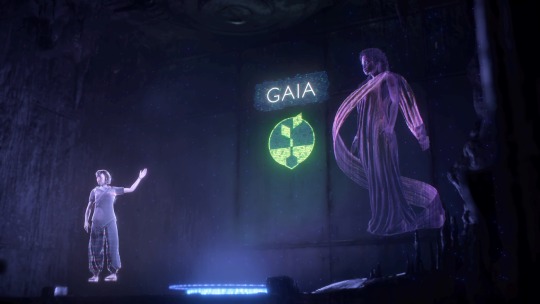

A seed, she called it, from which new life could grow on a dead world: Gaia. An AI—a true AI, she said—engineered to deactivate the Faro robots and grow life on Earth anew. The central intelligence was joined by nine subordinate functions, not AIs in themselves but still complex software systems, each serving a different purpose. It was as their names were revealed in the presentation that some of my greatest questions were answered.

Hephaestus, and Hades. Both of them were part of Gaia, her subordinate functions. But if they were once part of the system, how did Hades end up in the body of a Horus leading a Carja cult, and how did Hephaestus end up scattered across Cauldrons and infecting Cyan?
Only a few of the functions were mentioned: Hephaestus was meant to build the machines of the wilds, Aether to purify the air, Poseidon the water, and Minerva generated the codes that deactivated the swarm decades after the Old Ones fell—and its tower pictured looked just like the Spire. Artemis spawned animals, many of the holographic silhouettes familiar to me from the wilds, and Eleuthia...it spawned human beings in 'Cradle Facilities'. The presentation didn't explain how.

One function stood out to me: Apollo. It was meant to be a repository of all human knowledge that the children of the Cradle Facilities would learn from. The picture showed a Focus used to channel this knowledge, but what happened to it all? Could it still be intact somewhere? Whatever happened, that knowledge never made it to the people of the tribes, and Elisabet's hope that the people of the future wouldn't repeat the mistakes of the Old Ones was dashed.

Elisabet ended her presentation by imploring the candidates to join the project and help Gaia achieve a rejuvenated earth, and I can't deny her words were rousing. It was a beautiful dream, daringly ambitious, perhaps even close to impossible given what little I know about Old World technology. At the very least, creating a 'true' AI was strictly forbidden by all corporations, but at the end of everything, what did those regulations matter? What better to combat a machine of destruction than a machine of creation, a true peacekeeper?
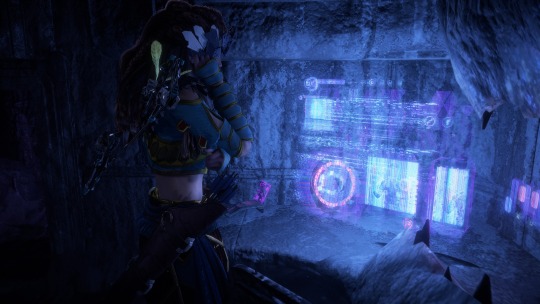
Moving on, I came to another holding area. All candidates who experienced the presentations were given three choices to decide their fate. First, to comply and participate in the project, working with their assigned team to build Gaia and her subordinate functions. If they refused to comply, they would be detained indefinitely, without a chance to reconsider after two days' time. Given they knew the truth about Operation Enduring Victory, they could not be allowed to leave and spread that information. It seemed cruel, but I can understand the need for strict secrecy. If people found out that there was no hope for humanity as they knew it, they would be likely to throw down their arms and try to end their lives as peacefully as possible, instead of in pain and fear in resistance against the swarm.
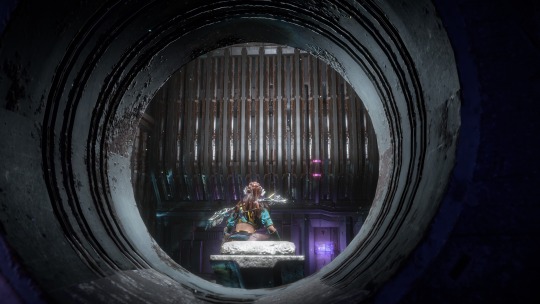
The third option was medical euthanasia; to die painlessly, alone, holding this secret forever. I saw the room where it happened. One bed, cold metal, cold lights striping the walls.
The interviews recorded showed all three reactions. Some were eager to contribute, willing to give all they could for a slim chance to save the future. The Faro employee, for instance, was thankful for a chance to undo his mistakes. Others were more skeptical but still willing to try, while others found the idea ridiculous. Ron Felder thought it even more far-fetched than space flight, calling the whole thing nothing more than a fantasy with a crazy hologram display to match. I gathered he was detained.
Perhaps the most interesting reaction was that of Travis Tate. He called the whole notion of trying to re-engineer the natural world unnatural, even abominable. Another reason that they couldn't let the secret out was that others would agree with him. I suppose I can see his point, but surely it was worth trying. Benefit of hindsight, I guess. Having no conception of what the natural world once was, it's beautiful to me. Maybe to them it would feel wrong, artificial.

More kestrels further on, all touting Firespitters. Once one was down the rest were easy prey.


Unfortunately I was right about the Eclipse. The deeper reaches of the ruin were already crawling with them. I was hoping to sneak around and climb the elevator shaft to Elisabet's office above, where the most classified data was sure to be kept, but the entrance was sealed. There was no way I could search for other exits and go undetected. I tried to take out the Eclipse unseen, but was spotted and they called for reinforcements, running in from neighboring chambers and rappelling from the upper level. It was a tough scrap, but there was plenty of cover. I lost them easily in the dark and was able to sneak around. The real problem was that now they knew I was here.

While exploring I came across the workstation for the Hephaestus function. There was a holographic recording of its director, Margo Shen, an ex-colleague of Elisabet at FAS before they both left the company. She explained that their job wasn't to design machines, but to program Gaia to use the tools and data contained within Hephaestus to design machines of her own. Hephaestus was clearly never meant to be intelligent, to feel emotions of its own—so what happened to it?
Sylens suggested it might have gone 'rogue' like the swarm and stopped answering orders. Maybe Gaia is out there, unable to communicate with the tribes or get Hephaestus and Hades back under control. If Hephaestus struck out on its own when the Derangement began, when did Hades escape—the same time?
I recognised some of the mechanical structures and holographic designs I found from Cauldrons, iterated on and grown wild. Everything was beginning to make sense.

Further on I found a similar recording of the leader of Apollo, Samina Ebadji. She spoke of collating, organising, and storing records of human knowledge across millions of different topics, and building a learning interface where the people of the future could gain that knowledge through a game-like process. Such an important station, authoring what would shape the future of human civilisation—choosing what would be remembered and what should lay forgotten. From the datapoints I discovered, the project was running on schedule and they were planning to store the data in 'synthetic DNA'. If Samina's project didn't fail, then what happened to it?
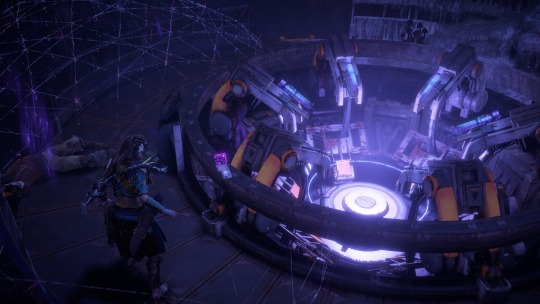
More Eclipse in the next chamber, which I dispatched undetected. I found a recording from General Herres—some sort of testimonial, an apology for the lies and injustices of Operation Enduring Victory. I can't imagine the guilt, but it was the right thing to do. It has to be, or nothing would have survived. The swarm would have swallowed this facility long before Gaia's completion.
In more datapoints I found, Margo and the other function leaders were named 'Alpha candidates'. Back in All-Mother mountain, when the door denied me, it said that the Alpha registry was corrupted. Was it trying to match my identity to the list of Alpha candidates on the project? If that piece of data was part of all Zero Dawn's associated facilities, I suspected I could find it here as well.
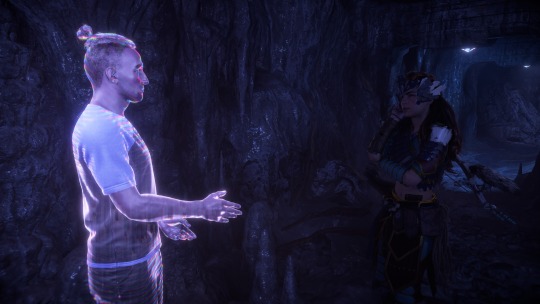
Next, I entered Hades' old domain and listened to an introduction by Travis Tate, the eccentric 'hacker'. From what I could gather, his crimes consisted of exposing the dark secrets of corporations and orchestrating sort of technological pranks on a global scale. Elisabet trusted him enough to put him in charge of the Hades function, but judging by what's happening now his work left something to be desired.
Hades was Gaia's extinction function. 'Apocalypse on speed dial', Travis called it, the idea being that Gaia was unlikely to engineer a perfect Earth-like biosphere on the first go. It was a delicate balance to recreate, and in the event of firestorms and poison skies irrevocably locked in a cycle of chaos, Hades was built to temporarily take control of the system away from Gaia and undo terraforming operations, returning Earth to the barren rock it was when the swarm subsided so Gaia could begin again. One of the datapoints spoke of a facility where Gaia and Hades were tested together, where Travis tried to engineer the correct feedback and reward behaviour to ensure the entities passed control back and forth as desired. It seems that of all the subordinate functions, Hades was the most intelligent, as it needed to be able to manipulate the other functions in event of a catastrophe. Though, again, it was never intended to possess emotional responses.
But Gaia succeeded long ago, why would Hades wake now? Did it try to take control, causing Gaia to expel it from the larger system? If it no longer had Gaia's tools and functions available to it, it seems logical that its next best course to undo Gaia's work would be to wake the Faro bots themselves to resume their gruesome conquest. Thanks for that, Travis.


Next on my journey to Elisabet's office, I passed Eleuthia's headquarters and listened to an address from its leader, Patrick Brochard-Klein. He spoke of perfecting the technology to create humans inside machines, and to build 'servitors', robotic guardians resembling humans themselves, who would care for the new generations inside their Cradles. He stressed that this was a project of preservation, not 'genetic engineering', and spoke of regulations around...cloning, which he refused to transgress. Clone, as in copy.
There were many 'ectogenic chambers' inside the workshop—the machines from which new humans were spawned. The logs I found said they were donated by Far Zenith, whose conception of the technology was far ahead of public scientific records. I've come across a few datapoints mentioning the organisation before, sometimes called simply 'FZ'. They were a mysterious group of billionaires (a word for the wealthiest and most powerful of the Old Ones), their identities unknown to all outside the group. They had their own 'think tanks' and scientists developing technology in secret, much like a corporation, or a co-merging of many corporations, using the exhaustive profits of them all. I know they bought a space station called the Odyssey, though when I first read this I didn't understand what it meant. From Ron Felder's tirade, I knew then. A structure built to travel away from this world, through the stars. With the most advanced technology and near-infinite resources available, could they have succeeded?
Thoughts gathered in the back of my mind that I wished to ignore. It was clear to me that All-Mother mountain must have been one of these Cradle facilities, given the ruin inside and the bunker door, answerable to Elisabet. Every Nora myth pointed to this too: the life-giving goddess within, and its battle against the Metal Devil. Perhaps some knowledge of the Old Ones did survive and was imparted to the first new people of the earth. And of course...I came from that mountain. I was found just outside its doors, alone. I suppose some of the first people might have remained behind the door. Perhaps there was a schism long ago, or they're protecting the Apollo archive inside. Maybe helping Gaia to operate. But why wouldn't they try to communicate with the world outside?


Finally, I made it to Elisabet's workshop. There were a number of preserved recordings inside. The first, an argument between Elisabet and Ted. I'd hazard a guess that this happened often. To think that he still had the gall to argue with her after everything he did...I suppose she had to put up with it considering he was funding the operation.
Faro was disputing Elisabet's assertion that Gaia had to have complex emotional capabilities to properly rebuild and safeguard the world. She needed 'skin in the game', Elisabet said—I suppose if she felt no emotional connection to life, human or otherwise, she'd have no incentive to put their needs first, or the means to conceptualise their needs accurately to begin with. Intelligence and emotion go hand in hand, as Cyan explained.
Faro was wary of 'repeating past mistakes'. I'm don't think he was only talking about the swarm, because they had no emotional capacity themselves, only strategic intelligence. He wanted a kill switch, which I gathered ended up being Hades—a way to wrest control from a version of Gaia gone wrong. Gaia herself chimed in and agreed with him, understanding her own volatility. Her voice was beautiful: smooth and deep and full of care. Maybe it was only a clever trick of programming in those early days, but she sounded like she had developed emotions already. Her projection didn't match the figure I saw in Elisabet's presentation though. She was just a golden ball of liquid light.


More recordings, the first of Elisabet and Gaia discussing her emotional responses to mass extinction events of the ancient past. It seemed her development was going well, but it was cut short. In the final recording, Elisabet was panicked, erratic, irritable. She was trying to lock everything down and evacuate the facility before the swarm hit, evidently ahead of projected schedule. Gaia comforted her, and for the first time I witnessed a moment of weakness in Elisabet. She lamented all the lives lost in Enduring Victory—all those deaths, those lies, would be for nothing if she couldn't complete Gaia in time.

In Elisabet's office, along with plenty more data to sift through, I found just what I was looking for: an intact copy of the Alpha registry. I made the mistake of voicing my wish to meet my mother inside All-Mother mountain's Cradle, which Sylens shut down with derision. He said there would be no people behind that door, only machines. I refused to believe it.

As I was downloading a copy to my Focus, more Eclipse soldiers began to descend from above. I couldn't leave until the transfer was complete, and just as it did I went to make my escape, but behind the glass was Helis. We locked eyes for the first time since the Proving. Before I could react, he threw a bomb and detonated it in front of the glass, blasting it inward and knocking me back against the desk.

I only fell unconscious for a few moments, but it was enough for Helis to land at my side, glare smiling with those pale, manic eyes, and kick me back into the darkness.
#god i was dreading writing this one. so much lore#hzd#horizon zero dawn#aloy#aloy sobeck#aloysjournal#hzd remastered#photomode#virtual photography#horizon
12 notes
·
View notes
Text

August 2 is Earth overshoot day 2023 !
Earth Overshoot Day (EOD) marks when humanity’s demand for ecological resources and services in a given year exceeds what Earth can regenerate during that year.
Today is Earth Overshoot Day 2023, the Earth Overshoot Day calculated every year by Global Footprint Network using data from National Footprint and Biocapacity Accountswhich indicates the official depletion of renewable resources that the planet is able to offer within a year.
This means that today, August 2, humanity has already “finished” all the resources that Nature produces in an entire year and is starting to go into debt. Humanity, with its over 8 billion inhabitants, consumes in excessive quantities, beyond the natural regeneration (and reabsorption) capacities of the planet.
In 1973 Overshoot Day fell on December 3: we were just a few days over our annual budget. In 2003, September 12, in 2013, August 3. The date has always been getting ahead and our ecological debt has grown.
Globally we are consuming the equivalent of 1.7 Planets a year, an ominous figure that is expected to rise to two planets by 2030, based on current trends. In the last 5 years the trend seems to have stabilized, but it is difficult to establish whether this is due to the slowdown of the economy or to decarbonisation efforts. However, the reduction of our “debt” to the planet is still too slow. To achieve the United Nations IPCC goal of reducing global greenhouse gas emissions by 43% by 2030 (compared to 2010) it would be necessary to move Earth Overshoot Day forward by 19 days per year for next seven years.
According to the WWF there are many solutions that can be adopted at the community level or individually to have a significant impact on the type of future we invest in: for example if we used energy from 75% renewable sources we could move the Overshhot day by 26 days ; halving food waste would save 13 days.
“If up until the 1960s humanity was more or less in balance, the date has moved from year to year up the calendar, to arrive today at the beginning of August. This means that humanity has been in ecological overshoot for over 50 years and the debt we have accumulated amounts to 19 years of planetary production, i.e. what Earth’s ecosystems can regenerate in 19 years. The burden of this debt, which is set to increase, is starting to reduce economic options. The loss of biodiversity, the growing unpredictability of the weather and the depletion of groundwater are just a few symptoms. But overcoming itself is not inevitable. Constantly living beyond the physical possibilities of our planet is a limited possibility in time, we risk an ecological disaster: the goods and services that are the basis of our societies and economies are all produced by functioning and healthy ecosystems. We now have many targeted solutions to reverse the overexploitation of resources and support the regeneration of the biosphere in which we live”.
#human rights#humanity#global footprint#footprint#earth#overshootday#ressources#climate change#climate emergency#ecology#sustainability#sustainable
107 notes
·
View notes
Note
Columbo vs. Father Brown WHO WOULD WIN??????
I mean they’d never go against each other, but if there was a friendly detective vs detective race to the solution:
1. Columbo’s job is detective work. He is a professional. Besides having the authority and resources of the police department, he’s got the full 40-hour (plus) workweek to focus on this and nothing else. One of the fundamental premises of his character is that he always catches his man through sheer dogged tenacity. Meanwhile Father Brown has a whole vocation and often a parish or two on his plate.
2. On the other hand, Fr. Brown's job is human nature. He doesn't need to spend nearly as much time or effort to figure out what's going on, if only because he's probably seen it a dozen times before. Where Columbo might need to spend a couple of weeks breaking an alibi, Fr. Brown would simply know that the suspect is not the kind of person to have been in such a place at such a time.
3. They're both trickster characters, but Columbo often intentionally tricks or traps where Fr. Brown doesn't indulge in more than concealment or reticence. Where Columbo has no compunctions about lying when necessary, Fr. Brown is usually scrupulously honest (it's not his fault if people tend to interpret more than he means into what he says.)
4. Becoming a priest requires more education than becoming a police detective does. Columbo & Fr. Brown are probably equal in terms of raw intelligence, but given occupation, time, and place, Fr. Brown's going to have had a lot of exposure to Latin, Greek, Philosophy and History, where Columbo likely only has a GED + two years of police academy. This might not necessarily be an advantage, but there are a couple of Fr. Brown stories where his literary acumen has helped him solve a case.
5. Difference in conventions. Neither Columbo nor Fr. Brown are ever seen to have been defeated by a case (although Columbo admits to having taken years to close at least one), but where Columbo always makes an arrest (only once not arresting the actual guilty party due to somebody else's confession and extreme extenuating circumstances), Fr. Brown will forgo turning a party over to the authorities if justice can best be served another way. They both always catch their man, but Fr. Brown will let him go again.
All together, I think that Fr. Brown would arrive at the solution and confront the perpetrator while Columbo was still assembling his trail of evidence, but the arrest would still be impossible until Columbo had actually gathered all of his data and arrived at his own conclusion.
(The real answer is that Columbo would invite the Padre over for dinner, and after a pleasant meal they would share some tobacco and good wine while talking about more cheerful topics than murder).
34 notes
·
View notes
Note
can i use AI if i do something to offset my environment impact like go do a nature cleanup or plant trees or something? AI really, really helps me by coming up with solutions for me and helping me think things through and come up with plans (i’m neurodivergent so that’s hard for me) but i know data centers used to train AI use massive amounts of resources. idk can i even really make a difference just as one person when there are huge corporations out there putting out more carbon in a day than i do in my entire life
-
14 notes
·
View notes
Text
[Profiles #2 🐾- YPD sequel version ]


Nöel Leblanc [ ノエル・ルブラン ] | 22-23yo -- A fine gentleman human form of the elusive and eccentric phantom thief digimon, Arsenemon. After spending a few years overseas with his teammates Youta and Mizuki, he’s back to business when some leaked data from Menoa Bellucci’s top secret blueprints of Eosmon just appears in a research facility in Tokyo. However, he’s not able to turn into Arsenemon anymore and had to recruit a new phantom thief to work with him?!
[Birthday: June 15] [Codename: Étoile (Fr: Star) ]

Miss Espimon [ミス・エスピモン] -- Arsenemon's partner in crime and navigator. She's a cyborg digimon type who uses her knowledge and skills to help Noel achieve his goals, but she's also the most realistic and serious of the group, possibly the one who can remind Noel and the others of their goals and keep Noel himself from going off the rails by enjoying a good cat-and-mouse game with his rivals. She also deserves a pay rise.

Hino Youta [ 火野陽太 ] | 23-24yo -- A part-time photographer who enjoys vehicles and mechanics. He’s basically the group’s personal driver alongside their best intel when it needs to get information about the target. Despite having a more calm and sensible side nowadays, he’s still a complete smug idiot. He loses his composure to any kind of injustice he witnesses, but doesn’t take drastic actions immediately anymore and would prefer to leave it for a specific time on the same day.
[Birthday: Aug 22] [Codename: Soleil (Fr: Sun)]

Coronamon [ コロナモン ] -- Youta’s digimon partner; a beast digimon type who’s stoic and has a strong sense of justice. He does not hold back anymore and is more vocal whether he disagrees with a decision taken by Youta and tends to work as the boy’s brakes when needed. He usually warp evolves into Flaremon instead, but rarely evolves to Firamon.

Hikawa Mizuki [ 氷川美月 ] | 23-24yo -- A lesser hacker and technician with speciality in security break. Her usual job is just making sure the system security from several companies and facilities is updated and working correctly, but said abilities are also used for her questionable missions given by Nöel. She’s also psychic and can really sense when things are about to go south, besides willing to solve issues with pacific resources if possible. However she won’t hold back if no pacific solution is available for her.
[Birthday: June 22] [Codename: Lune (Fr: Moon)]

Lunamon [ ルナモン ] -- Mizuki’s digimon partner; a mammal digimon whose can be a wild card and come up with very strong remarks and sassy commentaries directed at everyone but Mizuki, but nowadays she just tries to keep everyone together. She also has a sweetheart supportive side, but hides it within the said trickster nature. Lunamon usually evolves into Lekismon in order to work as the group’s support by putting the enemies to sleep with her sleep bubble bombs, and will only evolve to Crescemon if they all need a stronger and offensive evolution for combat.

Phantom Thief Chat Noir [ 怪盗シャノワール ] | ??? -- Also called by the Space trio as “rookie”, this mysterious phantom thief has the specialty to trespass securities and infiltrate into places without being noticed immediately. Has a weird verbal tic to end some of his phrases with “nya” and seems to be really bad at talking with others. Tries to act cool but somehow is afraid of crossing paths with Ken and the 02 group? No one knows who this person is at the moment, but there’s a few suspects in Ken’s list. That said, they do have a serious and cocky side when dealing with a few missions…
[Birthday: ???] [Codename: Rookie]

??? [???] -- The phantom thief Chat Noir has an unknown digimon companion, but is it a digimon partner or some kind of random digimon acquainted with this mysterious figure, like how Miss Espimon is Nöel/Arsenemon’s navigator and partner-in-crime?
.
.
.
[02 Group + Rui v.]
#young prince detective ichijouji ken#young prince detective sequel#arsenemon's ambitious heist case
3 notes
·
View notes
Text
From Burnout to Balance: Is Project Resource Planning the Ultimate Solution?

Burnout is no longer a silent intruder in the workplace, it’s a widespread disruption, silently eroding productivity, morale, and innovation. With increasing pressure to meet deadlines, deliver quality outcomes, and align with dynamic goals, teams often find themselves trapped in chaotic workflows. The divide between what is expected and what is delivered continues to grow. This is where a shift towards project resource planning has emerged as a beacon of stability.
A structured approach to resource distribution isn’t merely about scheduling—it’s about restoring order, clarity, and purpose. It offers a comprehensive overview of skills, schedules, and assigned roles. When implemented effectively, it transforms a fractured process into a seamless operation.
The Root Cause of Burnout Lies in Poor Planning
Workforce exhaustion often results from uneven workloads, poorly defined roles, and misaligned priorities. Without visibility into task ownership and team capacity, employees juggle conflicting objectives, causing fatigue and disengagement. Leadership, in such scenarios, often reacts to symptoms rather than solving the underlying problem.
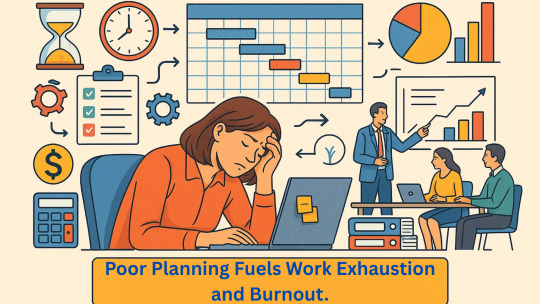
A well-devised planning system allows businesses to align their human capital with real-time project needs. It enables early detection of overload, bottlenecks, and inefficiencies. More importantly, it allows for a preventive, not reactive, managerial style.
Clarity Creates Confidence
When people know what they’re doing, why they’re doing it, and how their contributions affect the bigger picture, confidence and accountability naturally increase. Task transparency reduces confusion and eliminates duplicate efforts. A clearly mapped schedule lets employees manage time more effectively, promoting both efficiency and mental well-being.
Resource forecasting through intelligent tools supports realistic deadlines and reduces rushed outputs. Balanced task assignment nurtures sustained momentum and steady performance without burnout. This clarity becomes the silent catalyst behind exceptional team dynamics.
Enhancing Performance with Technology
Technology enables precision. Gone are the days when Excel sheets dictated workforce allocation. Today’s systems offer intelligent dashboards, behaviour analytics, and workload forecasting—all in real-time. Modern tools serve as operational command centers where strategy, execution, and evaluation coexist seamlessly.

Key Platforms That Reinforce This Shift
EmpMonitor stands out as a workforce intelligence platform that provides real-time employee tracking, productivity breakdowns, and application usage analytics. Its strength lies in mapping behavioural patterns alongside performance. Automated timesheets and screen activity logs, ensure that resource management decisions are data-driven and transparent. EmpMonitor excels in both in-office and remote team settings, offering flexible yet detailed oversight.
Hubstaff contributes to this ecosystem with its GPS-enabled framework, making it well-suited for mobile teams and field-based activities. It tracks time, location, and task completion metrics, allowing for accurate billing and service delivery analysis.
Desk Time focuses on simplicity and intuitive design. It’s suitable for creative and agile teams that prioritize clean time-logging and visual timeline management.
Together, these platforms showcase how digital tools revolutionize resource planning with actionable intelligence and minimal manual effort.
Turning Data into Action
One of the most profound benefits of structured resource planning lies in turning raw data into strategy. By monitoring time investment, engagement trends, and workflow pacing, leaders can adapt schedules, reallocate resources, or restructure priorities before productivity drops.
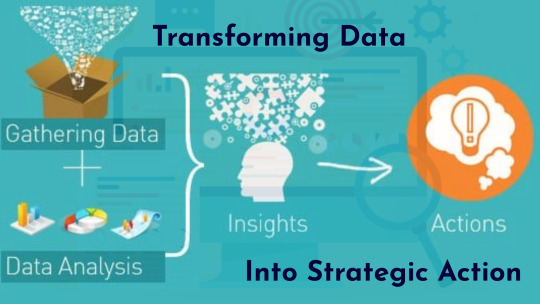
More than numbers, it’s about understanding human bandwidth. This employee wellbeing strategy leads to smarter delegation, increased autonomy, and performance-based adjustments—all essential for a healthy work environment.
Building a Culture of Preparedness
Effective planning isn’t just operational—it’s cultural. It breeds discipline, encourages ownership, and ensures employees are equipped to deliver without overstretching. With real-time insights, feedback becomes continuous rather than occasional. It also supports upskilling opportunities by revealing gaps where intervention is required.
By embedding structure into everyday functions, teams become more responsive and less reactive. The culture shifts from chaotic urgency to composed delivery.
You can also watch : How to Use Live Screen Monitoring in EmpMonitor | Step-by-Step Guide
youtube
Conclusion: The Balance Blueprint
Balance in today’s professional landscape stems not from lowered aspirations, but from strategic and refined execution. Organizations that synchronize effort with available capacity tend to achieve higher productivity and demonstrate greater resilience. With the right structural approach, maintaining equilibrium becomes both attainable and enduring.
The integration of project resource planning allows for thoughtful decision-making that respects both business goals and human limits. It’s not merely a managerial practice—it’s the framework for organizational health. For teams fatigued by inconsistency and overwhelmed by misalignment, this approach marks the transition from burnout to balance.
In a fast-paced world, the organizations that thrive will not be those that push harder, but those that plan smarter—with clarity, control, and compassion.
#resource planning#project planning#project resource management#project resource planner#project resourcing#Youtube
2 notes
·
View notes